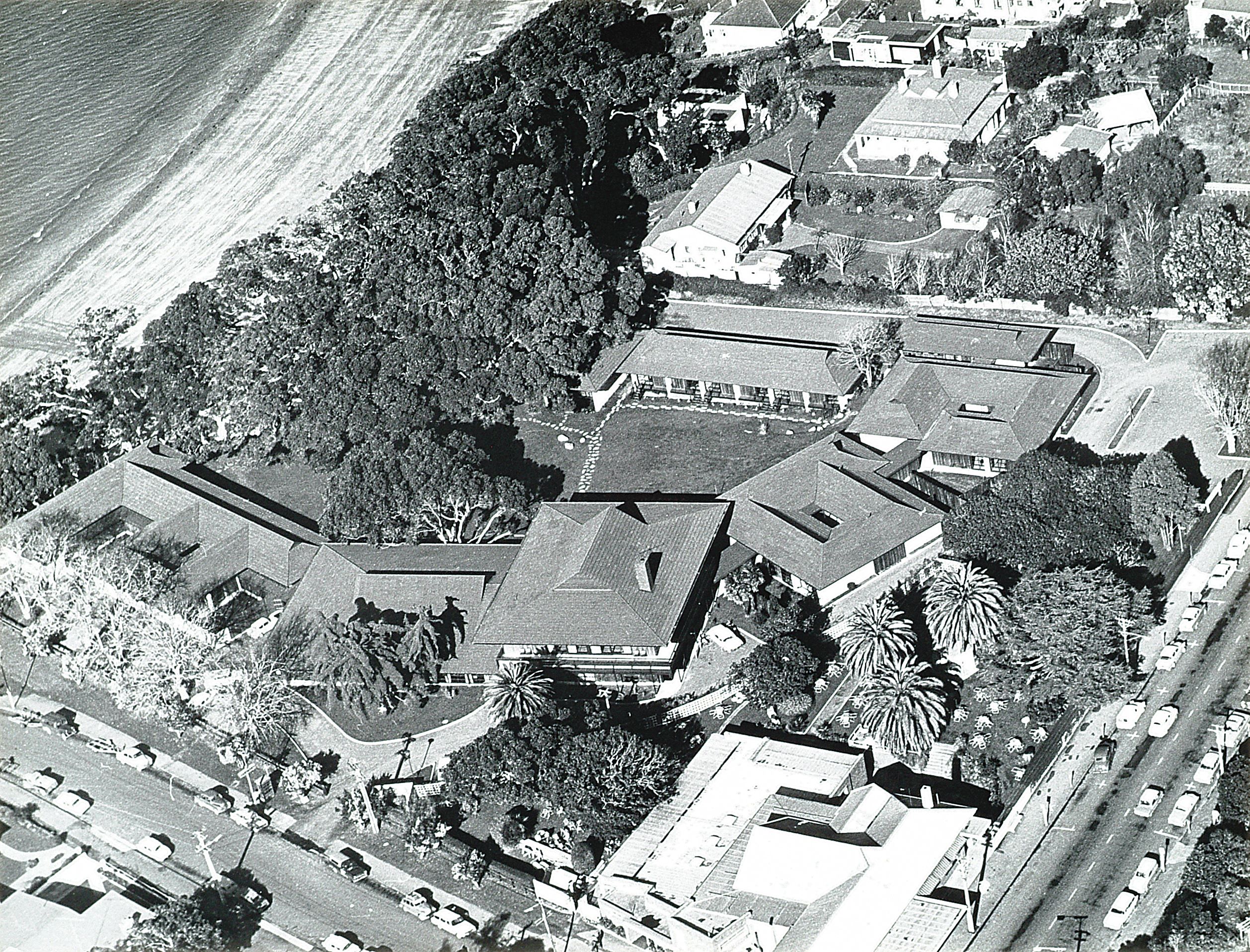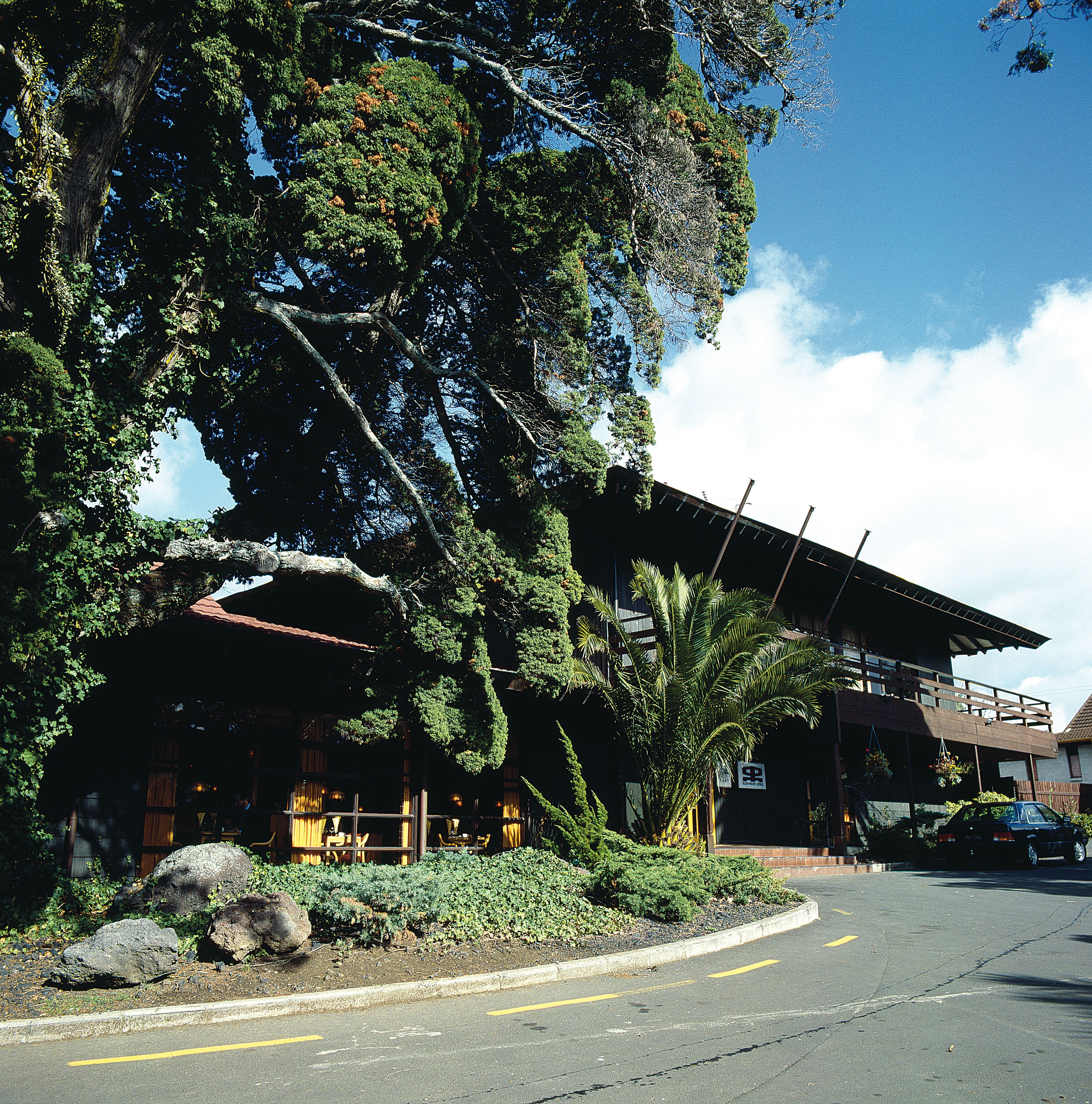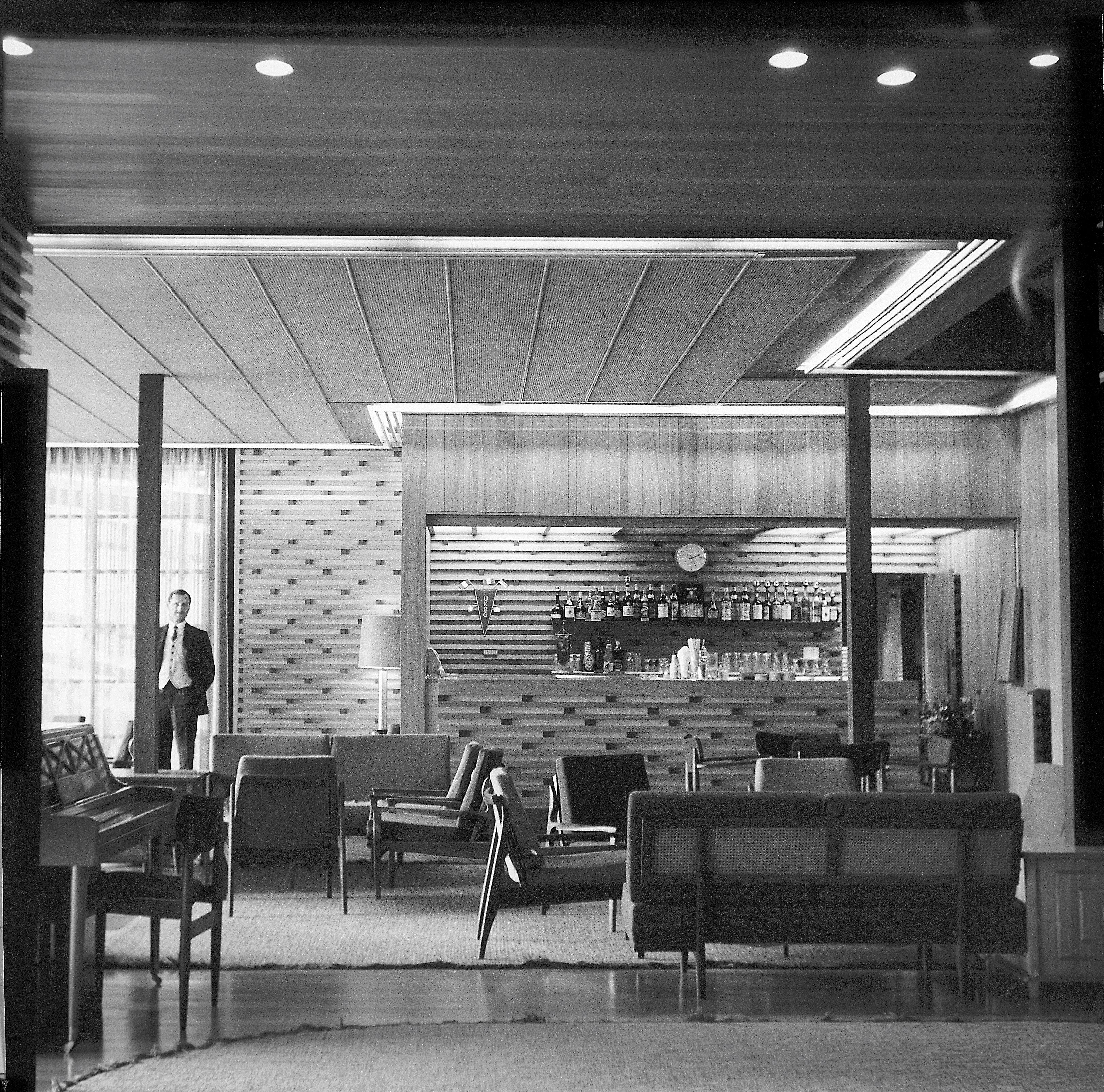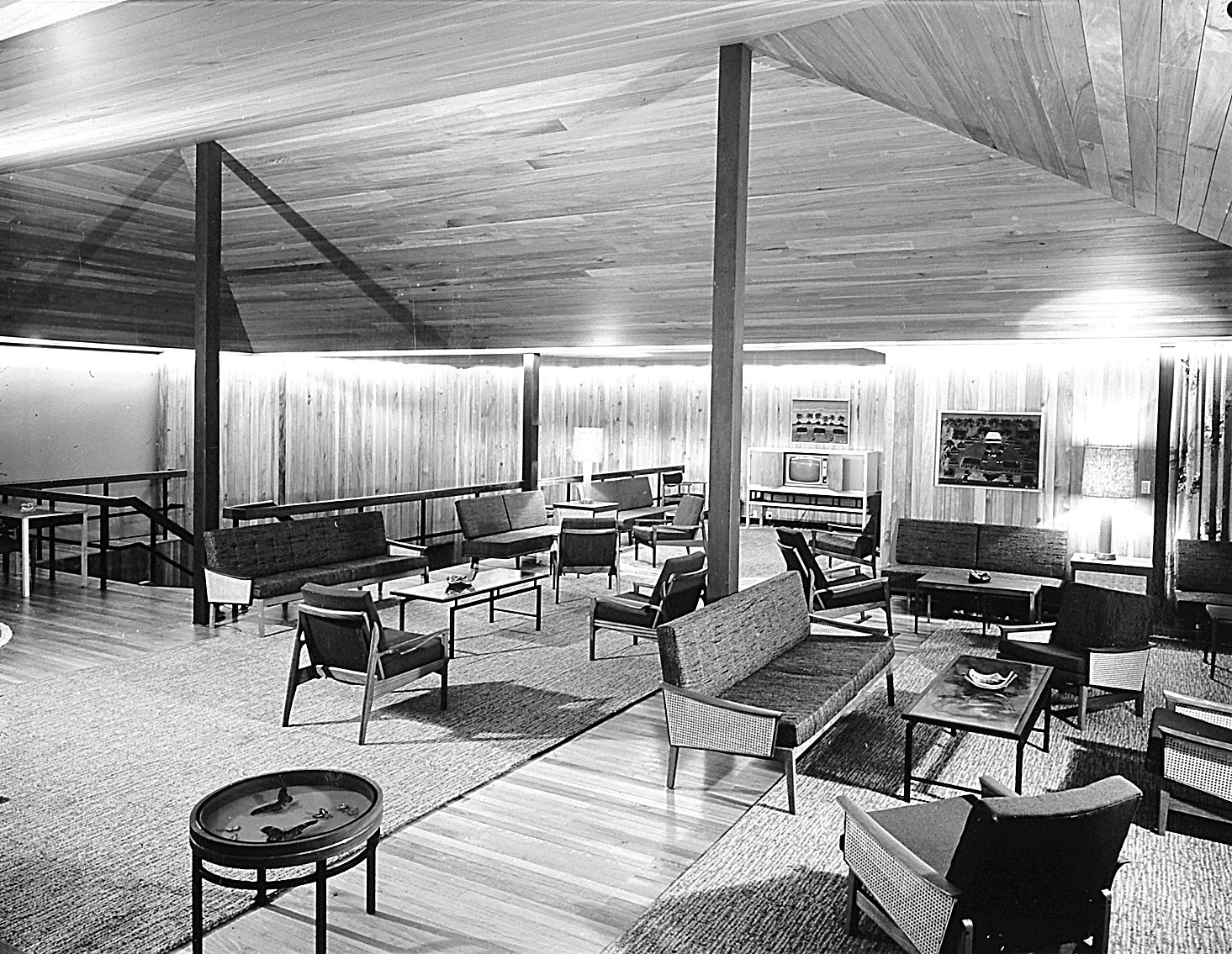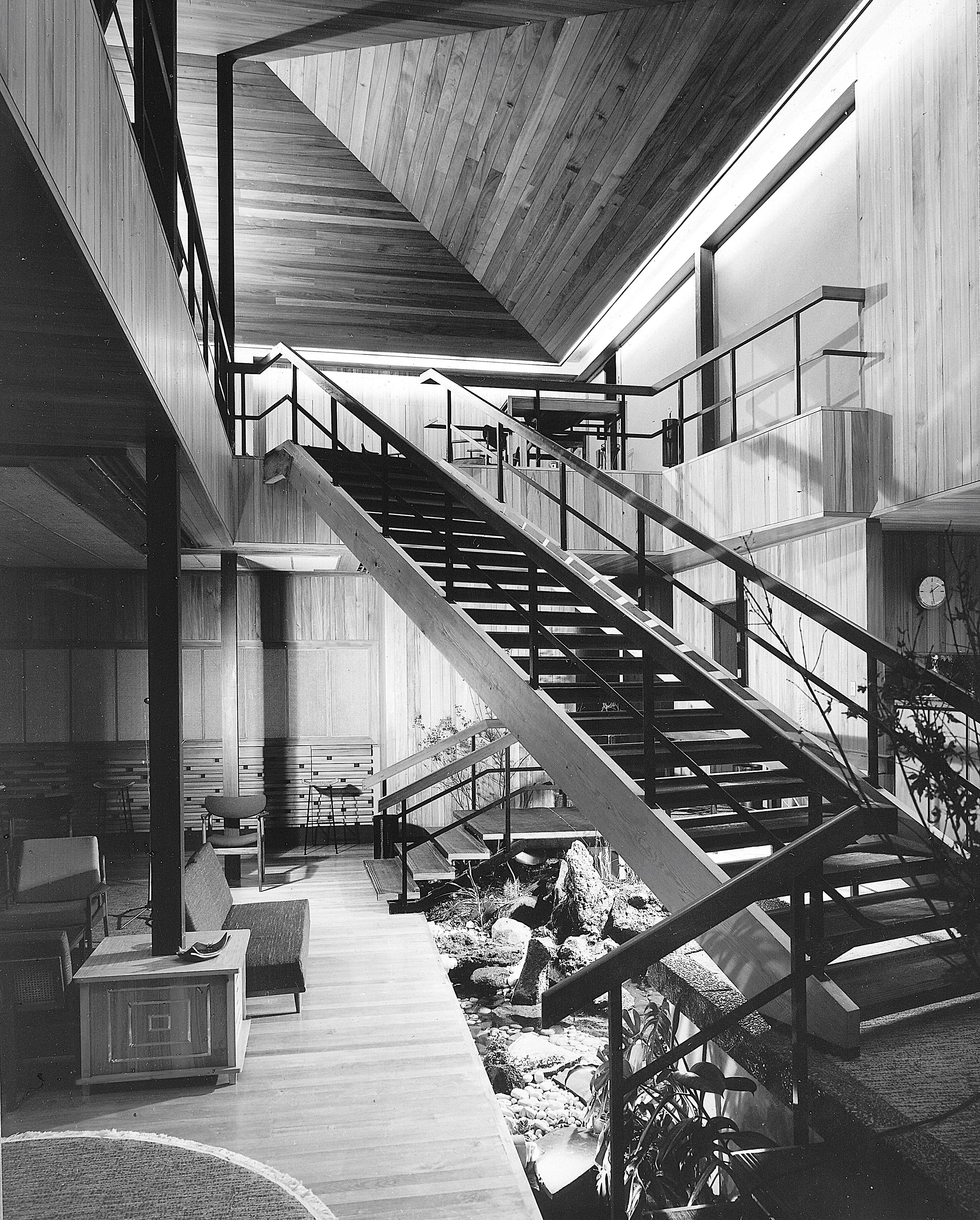By the late 1960s, architectural trends shifted from high modernism to the simplicity of traditional Japanese architecture, a movement beautifully exemplified in New Zealand by the Mon Desir Hotel. Designed to harmonize with its natural surroundings, the hotel embraced a holistic architectural design rare to New Zealand.
Nestled among landscaped grounds dominated by large Pōhutukawa trees, the design featured a village-like arrangement, with pavilion-style structures surrounding a central two-storey reception building. This layout fostered a sense of tranquillity while providing seamless access to the adjacent beachfront. The reception building housed two lounges, a convention room, a dining room, and a coffee lounge—blending innovative residential architecture with hospitality-focused architecture solutions.
A key aspect of the design used in Mon Desir Hotel was its thoughtful approach to landscaping. The design preserved existing trees over utilitarian elements like car parking, which was discreetly screened to minimize its visual impact. Changing rooms and recreation facilities were strategically placed near the beachfront, enhancing guests convenience while maintaining the natural integrity of the coastal setting.
The strongest expression of Japanese architectural influence was in the structure’s refined, well-articulated detailing. The design celebrated natural materials, incorporating redwood and cedar for exposed timbers, which were left untreated to weather into a distinctive grey patina. Inside, sliced Queensland walnut plywood, island kauri boarding, and Tawa flooring were chosen for their aesthetic and durable qualities, demonstrating sustainable architecture and engineering solutions. Structural elements included Australian karri posts and Oregon pine trusses, reinforcing the building’s connection to nature.
Though, The Mon Desir Hotel was demolished in the early 1990s, it remains an iconic example of holistic architectural design in New Zealand, influencing future eco-friendly building designs and demonstrating the value of sustainable urban architecture solutions that respect both nature and culture.
